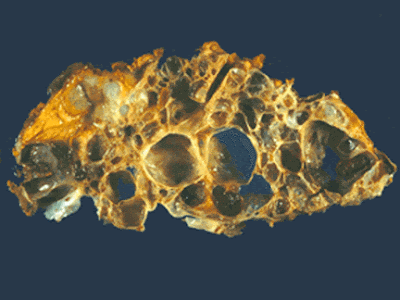 Patients with ADPKD are predisposed to nephrolithiasis. The postulated reasons for this increased prevalence of stone disease have ranged from metabolic abnormalities (previous reports have shown an increased tendency for hyperoxaluria, hypercalciuria, hypocitraturia, hyperuricosuria, and distal RTA) to anatomic abnormalities (large, obstructing cysts and dilated tubular lumens may create a situation of tubular stasis, which predisposes to stone formation).
Patients with ADPKD are predisposed to nephrolithiasis. The postulated reasons for this increased prevalence of stone disease have ranged from metabolic abnormalities (previous reports have shown an increased tendency for hyperoxaluria, hypercalciuria, hypocitraturia, hyperuricosuria, and distal RTA) to anatomic abnormalities (large, obstructing cysts and dilated tubular lumens may create a situation of tubular stasis, which predisposes to stone formation).A recent paper in C-JASN seeks to address the risk factors for nephrolithiasis in ADPKD patients. The researchers looked at a total of 125 patients with ADPKD and had them undergo both CT scan and Renal Ultrasound, as well as 24-hour urine analysis, looking for evidence of nephrolithiasis. About 25% of patients had evidence of stone disease on CT scan (which was significantly more sensitive than Renal Ultrasound). Although the researchers found a high prevalence of metabolic abnormalities in ADPKD patients (especially hypocitraturia) there were no excessively increased risk of stone formation in the presence of such metabolic abnormalities. In contrast, anatomical abnormalities DID seem to predict an increased risk of nephrolithiasis: those with a renal volume >500ml had an increased risk of stone disease.















No comments:
Post a Comment